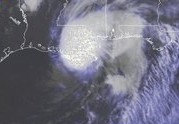of every academic who has yet to achieve nirvana and/or tenure. “Publish
|
|
|
We are honored to have as our illustrious guest photo editor for this “Special FEMA Appreciation Issue” Michael D. Brown.
Mr. Brown was originally unable to to make the time commitment necessary to edit our special photo series for this issue. However, he has just recently had rather a lot of time become free in his previously busy schedule, and he has decided to use that time to care for his horses and edit our photos.
For those who don’t appreciate the relation between FEMA and linguistics, consider how strongly FEMA has demonstrated the power of language: “No one told us there were thousands of people trapped like animals at the convention center, therefore there were not thousands of people trapped like animals at the convention center.” Sometimes reality is only real when the proper person uses the proper form of words to make it so.
—Eds.
|
|
or perish!” But how? There is very little in the way of practical advice for the newly minted Ph.D. on how to prepare and submit articles for publication in such a way as to maximize the likelihood of those articles actually making it to print.
As yet another fine service provided by SpecGram to the world-wide community of
up-and-coming linguists, I offer my thoughts, as an Editor and Publisher, on how to get
ahead in this cut-throat world in which we write.
First, you need to choose the right journal to submit your article to. Not everyone can be published in SpecGram, for example. Some must settle for likes of Language, or Linguistic Inquiry. There is no shame in that—or at least not too much.
Having chosen a target journal, you need an appropriate title. Like the cover letter that accompanies a résumé, the title is your first (and quite likely only) chance to grab the editor’s attention. And, like a cover letter customized to match a potential employer’s needs, your title should be crafted to fit the traditions of the potential publisher. For example, consider the following article title from Better Words and Morphemes:
On the indexico-relational inductivity hypothesis of proto-flectional meta-syntagm residuals in the discourse-evaluative elicitation of interactionally non-null quasi-specifiability criteria for quantificational irreducibility quotients in satisficing algorithms for preliminary displacement reduction of grammatological abductive derivational extrapolation heuristics factors considerations: A re-evaluation.
That would be totally
inappropriate for SpecGram. The JLSSCNC didn’t have quite the reputation SpecGram does, but still they must have been hard up for material for that issue to even consider it. Of course, once they looked, they were hooked, since it is a fine article... though the title is really much more fitting for a publication like Annals of the Semanto-Syntactic Paradigmicity-Shifting Meta-Linguistic Excursioners’ Club (which sadly ceased publication in 2003).
Of course your article should be an appropriate length. I could tell you a bit more about that, but I’m contractually obligated not to do so in the pages of SpecGram, but instead refer you to the now-classic article “A Meta-Analysis of Article Length vs Quality” by Alfraad vonn Güügënschnëchtën & Mo d’Qi.
Another crucially important component of the whole package which you submit to a journal is the cover letter—not to be confused with the cover-letter-like title discussed before: this is an actual cover letter. Perhaps the best way to explain the right way to write a cover letter is by example. Below is the best cover letter we have ever received, with some of the details changed to hide the author’s identity:
To the Illustrious SpecGram Editor, and to the Board of Editorship thereof,
Please find attached an article which I humbly (yet ardently) submit unto the aforementioned Journal heretofore with all due respect thereunto.
Throughout the article a smattering of non-Latin characters appear. If you deem it necessary to delete the non-Latin characters as a necessary condition for publishing the article, I will consider that a loss worthy of the honor.
Respectfully, evermore, and with all due salutations,
[name withheld]
Now that is a
cover letter. I may read the accompanying article before I publish it, but I don’t really have to, now do I?
Finally, if at first you don’t succeed at getting your article published in one journal, pick another journal and try, try again. Notice that the proverb says to “try, try again,” and not “try, try, try again,” or “try, try, try, try again.” After three tries, you should indeed give up.
There are other ways to get published, as is evidenced by “The Stalker” in this issue’s Poetry Corner, and also by a certain Manifesto herein. These methods are generally impractical, though, as they typically ultimately involve the police or herds of lawyers, or both.
What great luck to our readership that in this issue there is much additional material that can provide practical assistance on the topic of getting ahead in linguistics. In particular, we review a new book from Psammeticus Press, How to Cheat at Linguistics, and feature an article on “How to Get a Ph.D. Without Really Trying”. Next month we will present a special supplemental monograph, an interactive hypertext adventure entitled “Choose Your Own Career in Linguistics”, which lets you explore the myriad possibilities in the field of linguistics.
In other news, SpecGram is pleased to announce the addition of the often-imitated but nonetheless inimitable Metalleus as a featured author. Mssr. Metalleus will be contributing a number of articles over the upcoming quarters—including “More on Moundsbar” in this issue—and we are very pleased that it is so.
 |
Letters to the Editor |
 |
SpecGram Vol CL, No 4 Contents |

